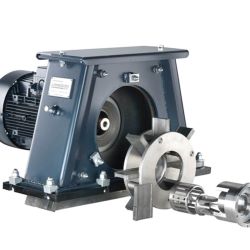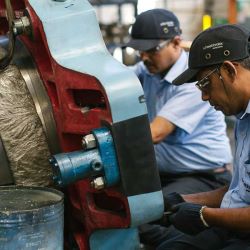Custom built by Wheelabrator, design modifications were required to the R3d (V) machine to fit the low headroom at its new home and enhance its safety features.
A team of seven people from Wheelabrator Group worked in conjunction with engineers from Warrington-based RWE and JRC Ispra to tailor the machine.
Mr Smith said: “The team at Wheelabrator Group have been very helpful. Projects such as these are never easy, but our good working relationship has allowed us to tackle the challenges presented together and develop solutions to solve these.
“The nuclear sector is one of the world’s most demanding industries with highly detailed specifications and exacting requirements.”
Located in Area 40 at the Ispra site, the unit replaced the old and obsolete chemical baths. A secondary containment wall and airlock was added to the room to reduce noise levels and aid contamination control.
With a 700 litre capacity, material to be processed in the machine is sealed in 220 litre drums and transferred to the machine via a hydraulic loader. Operators key in commands via a touch screen console located safely outside the secondary containment wall.
The main chamber is equipped with two Ezefit blast wheels, each with six blades and driven by a direct couple motor, which propels the sharp steel grit onto the contaminated components, removing the surface layer including any contamination. A heavy duty steel slatted mill creates a continuous tumbling action to ensure complete coverage of the components in one cycle.
Typically 30 minutes will remove contamination from metal components to below required clearance levels whilst 10 minutes will be sufficient for concrete.
Cleaned off contaminants are then fed to collection bins and the dust created bagged in secure waste drums. These can then be disposed of in accordance with the relevant legislation.
The steel grit is recycled within the machine via an airwash separator with a second magnetic particle separator and cleaned air returned to the room after passing through primary filters and an additional TROX air conditioner.
Lawson Pryke, technical director at Wheelabrator Group, said: “This abrasive blasting decontamination technique can be used to effectively reduce the amount of radioactive waste apparent with larger quantities of contaminated materials. The process produces fully decontaminated materials suitable for release, leaving a small amount of contaminated material in the form of dust, fines and paint residue, with reduced requirements for treatment and disposal.”
A four-day training course was provided onsite to all employees operating the machine. Installation, proving, spares and service is supplied by the group’s aftersales specialists, Wheelabrator Plus.


